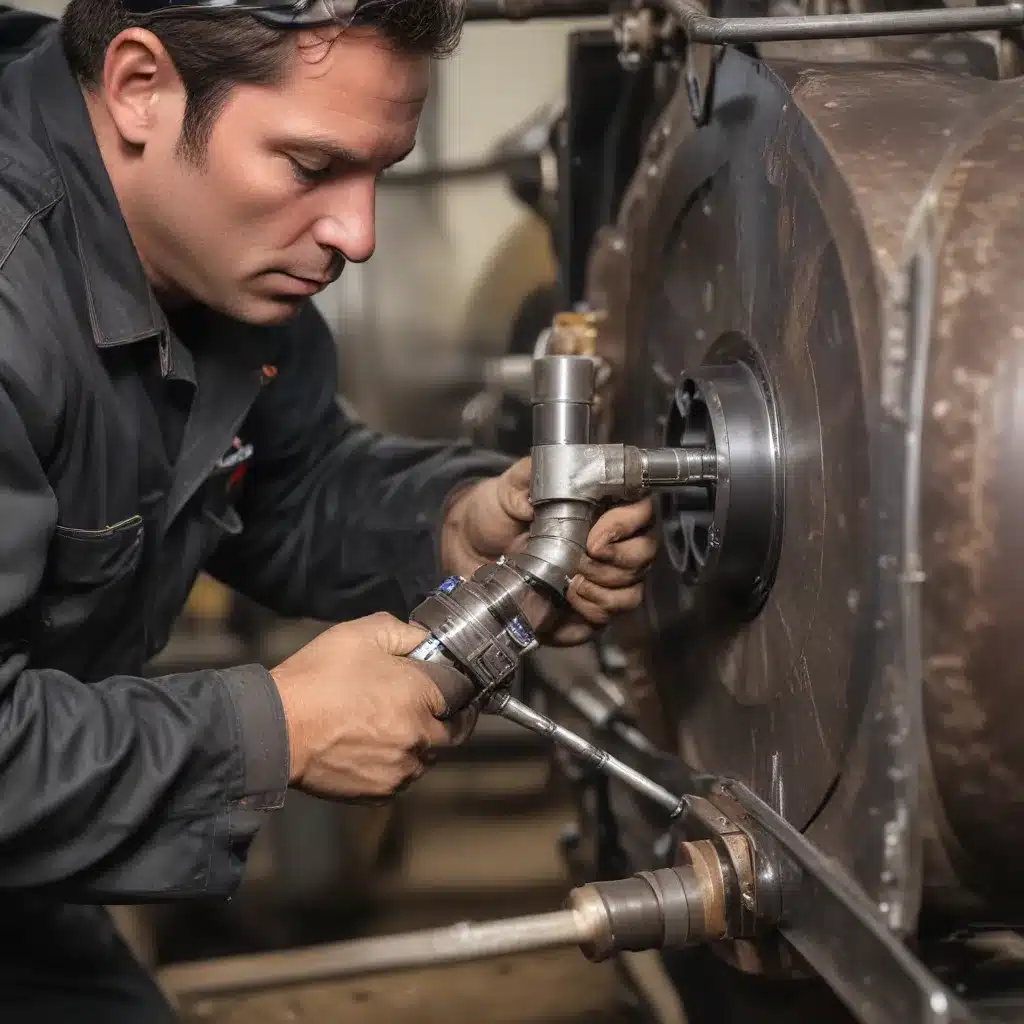
As an experienced welder and metal fabricator, I’ve had the privilege of working on a wide range of projects, from intricate sculptures to massive industrial installations. But one area that has truly captured my passion is the art of orbital welding, particularly when it comes to ensuring the integrity and safety of pharmaceutical piping systems.
The Importance of Precision in Pharmaceutical Piping
In the pharmaceutical industry, the quality and cleanliness of piping systems are of the utmost importance. These critical components play a vital role in maintaining the integrity of the final products, ensuring they are free from contamination and meet the stringent industry standards. As a welder, I understand that even the slightest error or imperfection in the pipework can have severe consequences, compromising the safety and efficacy of the medicines being produced.
The Benefits of Orbital Welding
That’s where orbital welding comes into play. This automated welding technique involves rotating the electrode around the workpiece while simultaneously moving it along the joint, creating a consistent, high-quality circular weld. Unlike traditional manual welding, orbital welding offers a level of precision and control that is simply unmatched.
One of the key advantages of orbital welding is the consistent results it produces. The automated system minimizes the risk of human error, ensuring that every weld is strong, durable, and free from defects like porosity or cracks. This is particularly crucial in the pharmaceutical industry, where even the smallest imperfection can have catastrophic consequences.
Moreover, orbital welding helps to maintain the cleanliness of the piping system. By eliminating the need for manual manipulation of the electrode, we can reduce the chances of contamination by dirt, oil, or other impurities. This is a critical consideration in the sterile environment of a pharmaceutical manufacturing facility, where the slightest introduction of foreign matter could compromise the entire production process.
Mastering Orbital Welding Techniques
To truly excel in the art of orbital welding, it’s essential to have a deep understanding of the various techniques and their respective applications. Let’s explore a few of the key approaches that have proven invaluable in the pharmaceutical industry.
Automated Hot Wire TIG Welding
One technique that has gained traction in recent years is automated hot wire tungsten inert gas (TIG) welding. This method introduces an electrically preheated secondary wire, allowing for faster welding speeds and reducing the likelihood of contamination as the filler material joins the weld pool without direct contact.
The benefits of this approach are twofold: the increased welding speed helps to improve productivity, while the reduced risk of contamination ensures the integrity of the piping system. This makes automated hot wire TIG welding an ideal choice for pharmaceutical applications, where time is of the essence and purity is paramount.
Narrow Groove Welding
Another technique that has proven invaluable in the pharmaceutical industry is narrow groove welding. This method allows welders to merge pipes with thick walls by using a narrow weld head, providing access to confined spaces and reducing the overall volume of filler material required.
This is particularly advantageous in pharmaceutical manufacturing, where space is often at a premium and the minimization of potential contamination sources is a top priority. By using a narrow weld head, we can ensure precise, consistent joints while minimizing the risk of introducing foreign matter into the piping system.
Tube-to-Tube Sheet Welding
Finally, tube-to-tube sheet welding is a critical technique for creating strong, reliable joints between pipes and the supporting tube sheets in heat exchangers – essential equipment in many pharmaceutical processes. This specialized welding approach requires a keen understanding of material compatibility, joint design, and the expected flow of substances through the piping system.
By mastering tube-to-tube sheet welding, we can ensure that the critical connections within the pharmaceutical piping network maintain their integrity, even under the intense demands of the manufacturing environment. This attention to detail is what sets apart the true experts in the field of orbital welding.
Elevating the Standards of Pharmaceutical Piping
As I reflect on my experiences in the world of metal fabrication and welding, I’m constantly in awe of the vital role that orbital welding plays in the pharmaceutical industry. The precision, cleanliness, and airtightness it provides are essential for maintaining the high standards that the public rightfully expects from these life-saving products.
By staying at the forefront of orbital welding techniques and continuously refining our skills, we as fabricators and welders have the power to elevate the entire pharmaceutical manufacturing process. It’s a responsibility that I take immense pride in, knowing that the work we do directly contributes to the safety and efficacy of the medicines that improve and save lives.
Embracing the Future of Orbital Welding
As technology continues to advance, I’m excited to see what the future holds for the world of orbital welding. I envision a time when even more innovative techniques will emerge, pushing the boundaries of what’s possible and helping pharmaceutical companies overcome the unique challenges they face.
Perhaps we’ll see orbital welding systems that can navigate even tighter spaces, or advancements in filler material that further reduce the risk of contamination. Whatever the future may hold, I’m confident that the skilled welders and fabricators of The Weld Fab will be at the forefront, constantly pushing the limits of what’s possible and delivering the precision and quality that the pharmaceutical industry demands.
So, if you’re a fellow welder or fabricator looking to master the art of orbital welding, I encourage you to dive deep into the techniques and technologies that are shaping this critical field. Together, we can elevate the standards of pharmaceutical piping and contribute to the production of safer, more effective medicines for people around the world.
After all, precision is not just a goal – it’s a way of life in the world of metal fabrication. And with the power of orbital welding at our fingertips, the possibilities for innovation and excellence are truly endless.


